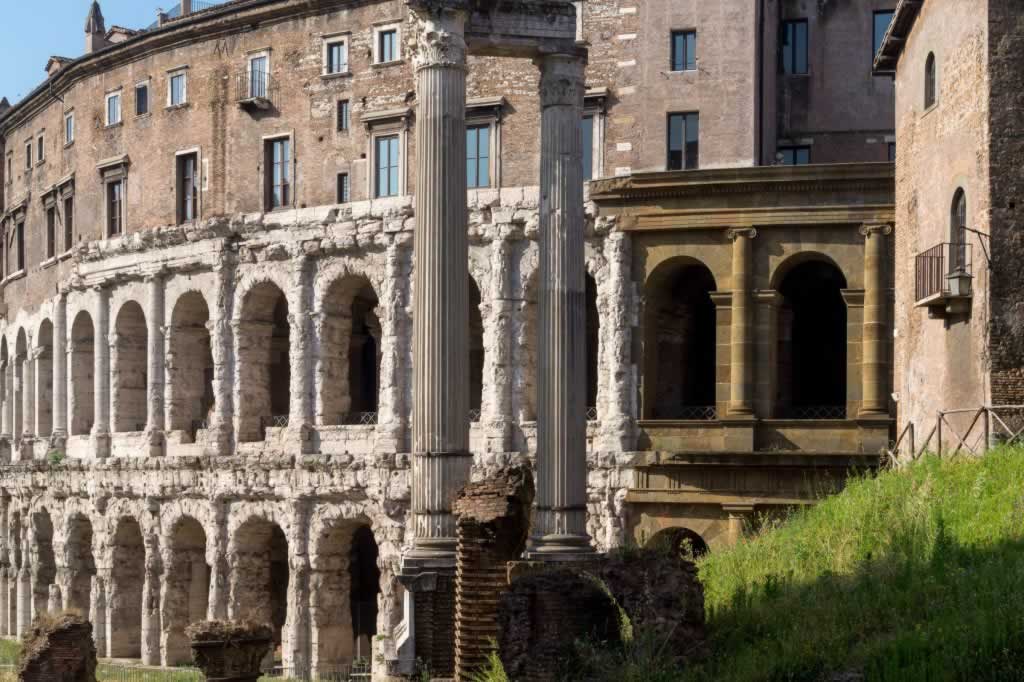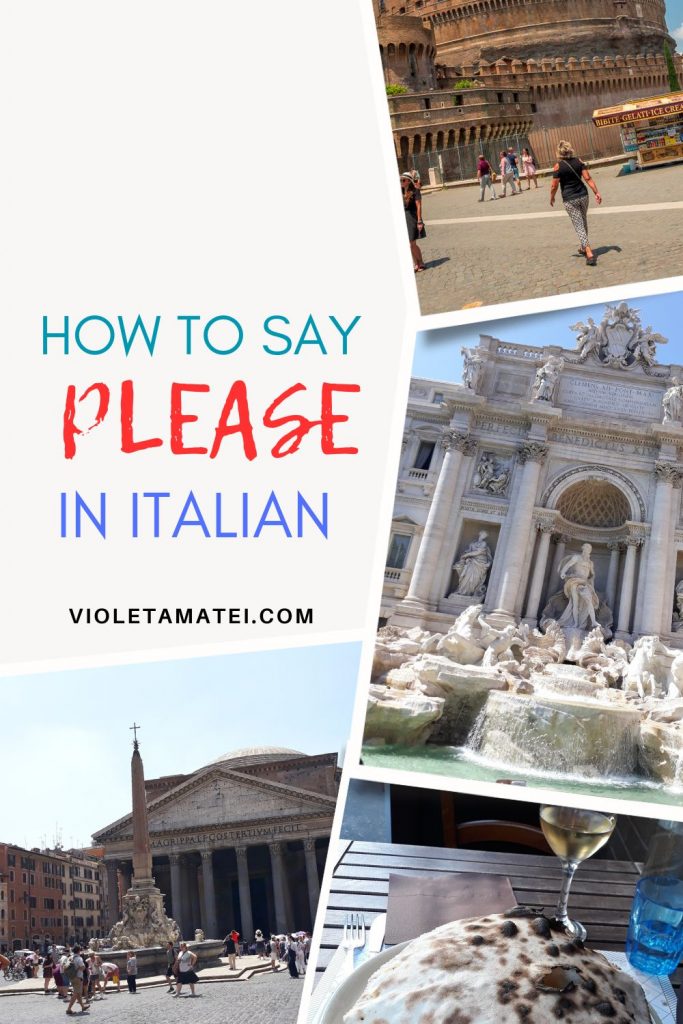Last Updated on: 25th October 2023, 09:12 am
When learning Italian, one of the first key words to know is “per favore”, used to politely request something.
Italians place a lot of importance on good manners and there are many creative ways in this language to say “please” and be polite. By simply learning how to say please and thank you in Italian you’ll earn the sympathy of local people and get them offer you the help you may need while visiting Italy.

A simple Please in Italian allowed me to find the best spot for taking this photo without having to pay any entrance fee
In this article, I intend to explore the different options for saying please in Italian, from simple forms to more formal ones. You’ll discover phrases, idiomatic expressions, abbreviations, and other ways to politely ask for things.
Main Topics of How To Say Please in Italian Language
The Most Common Ways to Say Please in Italian
Here are some of the most common ways to say “please” in Italian:
Per favore
“Per favore” is the standard, most used way. It’s suitable for most situations, both formal and informal. It equals “please” in English.
Per piacere
“Per piacere” has the same meaning and use as “per favore”. It’s simply a common alternative.
Per cortesia
“Per cortesia” is a slightly more formal version, emphasizing courtesy when making a request.
Se possibile
“Se possibile” is a polite way to request something, equivalent to “if possible” in English.
Sarebbe così gentile da…
This very formal phrase is great for politely asking favors or assistance from people you don’t know well. It equates to “would you be so kind as to…” in English.

Learn how to say please in Italian – this will make your breakfast so much better!
Common Abbreviations for “Please” in Italian Language
Italians love to abbreviate words and phrases. Here are some common abbreviations for “please”:
Per favore -> PF
In chats or informal texts, “per favore” often becomes simply “PF”.
Per piacere -> PP
Similarly, “per piacere” abbreviates to “PP” in quick online messages.
Per cortesia -> PC
The abbreviation “PC” is used in place of the full phrase “per cortesia” in less formal situations.
Per favore -> X favore
Substituting the “P” with an “X” is another common way for youth to abbreviate “per favore”.
Contracted Forms
Joining two words often creates contracted forms. Here are some ways to say “please” in contracted form:
Perpiacere
“Perpiacere” combines “per” and “piacere” into one word.
Percortesia
“Percortesia” blends “per” and “cortesia” together, common in spoken language.
Perfavore
“Perfavore” is another compound word joining “per” and “favore”.
Expressing Courtesy Colorfully
Italian has many colorful ways to express courtesy when making requests:
Ti prego!
“Ti prego” is a way to say please using the verb “pregare”, meaning “to plead”. It’s very polite.
Te ne priego!
This emphatic variant meaning “I beg this of you!” is very polite and formal.
Per gentile concessione!
A formal way to say “if you would be so kind”, emphasizing kindness.
Sii buono!
A familiar expression used between friends meaning “be good!” or “be a dear!”.
Facci questa cortesia!
Literally “grant us this courtesy”, used for politely asking a favor or assistance in a very courteous, respectful manner.
Common Responses to “Please” in Italian Language
When someone says “please” in Italian, there are various polite ways to respond:
– Prego – “You’re welcome” or “no problem”. The standard reply.
– Con piacere – “With pleasure”, shows happiness at being able to help.
– Ma certamente – “But of course”, emphasizes willingness to help.
– Nessun problema – “No problem”, conveys you’re glad to offer assistance.
– Volentieri – “Gladly”, demonstrates sincere readiness to help the asker.

When To Use Please in Italian Language
Knowing how to politely request things is an important language and social skill. Let’s see when and how to use it to show that you[‘re polite and compassionate about people around you.
How Do You Politely Ask for Something in Italian?
In Italian, the polite way to ask for something is by saying “per favore” which means “please.” You can say “Mi dà …, per favore?” (Can you give me…, please?) or “Vorrei…, per favore” (I would like…, please). Using “per favore” shows respect and politeness when making requests.
Other polite phrases are “per piacere” (if you please), or “per cortesia” (kindly). Saying please in Italian is not only good manners but also shows you are making an effort to be courteous in their language.
Do Italians Say Please when Ordering?
Yes, Italians do say “per favore” or “please” when ordering at restaurants or cafés. Saying “per favore” when asking for the bill, more water, or anything else from the waiter is expected politeness in Italy. Leaving it out would be seen as rude.
Do People Say Please in Italy?
In Italy, people commonly say “per favore” or “per piacere” which mean “please” when making requests or asking for help. Saying please is considered good manners and a way of showing respect. Not using it may come across as impolite or demanding.
Does Prego Mean Please?
“Prego” in Italian has a few different meanings. It can mean “you’re welcome” as a response to “grazie” (thank you). But it can also mean “please” when used to make an offer or invitation. For example, at a store the clerk may say “Prego?” to ask “May I help you?”
Do Italians Say Prego for Please?
Italians do not commonly use “prego” to mean “please” when making requests. The proper way to say please in Italian is “per favore” or “per piacere.” However, “prego” can be used to politely offer help or services. A waiter may say “Prego, signore” (“My pleasure, sir”) when serving a customer.
What Is Grazie Tutti?
“Grazie tutti” literally means “thank you all” in Italian. It’s used when thanking a group of people collectively. For example, a speaker finishing a presentation may say “Grazie tutti per la vostra attenzione” which means “Thank you all for your attention.” It’s an expression of gratitude towards a whole audience.
What Is the Alternative to Per Favore?
The most common alternative to saying “per favore” (please) in Italian is “per piacere.” This phrase literally means “if you please” but functions the same way as “please” when politely requesting something. Using “per piacere” instead of “per favore” adds formality and respect to requests.
Why Do Italians Say Prego?
Italians say “prego” for a couple different reasons. When responding to “grazie” (thank you), it means “you’re welcome.” But another use is when offering help or services, equivalent to “please” letting someone know you’re there to assist them. Italians also use it informally to mean “go ahead” or “here you are” when handing someone something.
I hope this overview of the many ways to say “please” in Italian, from simple forms to more sophisticated ones, is helpful in your learning journey.
With a little practice, politely asking for things in Italian will become natural and easy! Once you master it, check out my list of Rome captions for Instagram, decide upon the best time to go to Rome, and buy your tickets. Italy awaits you!
- Dingli Cliffs: How To Visit Malta’s Highest Point - April 24, 2024
- Blue Grotto Malta - April 23, 2024
- Ramla Beach Gozo, Maybe the Best in Malta - April 9, 2024

